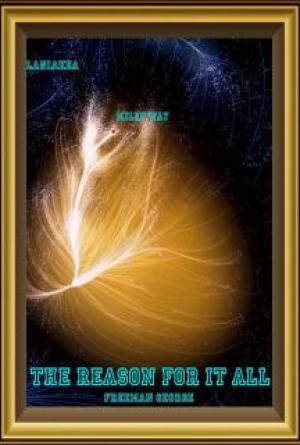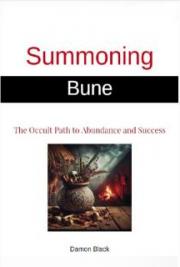10 Tips for the PSK31 Digital Mode·
 ·
·
PSK31 is arguably the most popular amateur radio digital mode. It utilized phase-shift-keying to provide robust, narrow signal width communications, and requires very little power to QSO the world!
· Use the center of your waterfall. Testing will · show that your transmit (TX) and receive (RX) will be strongest there. Don’t blindly use 1000Hz tone or strictly follow the VFO ‘set it and forget it' concept. You can easily lose 20% or more of your power on each edge of your pass band. Pass band centering of the signal will give the best results of both RX and TX.
· There's no need to have the waterfall streaking · bright red. Set your rig's volume to a low level (less than 25% of max) and adjust your waterfall and soundcard levels for a good contrast. Do not overdrive your soundcard! Get the background noise and the transmit trace well defined and separate. Keep in mind, how your waterfall looks does not impact decoding, but it is harder to work it if you can’t see it.
· Use UPPER CASE characters sparingly. Lower case text in PSK31 varicode transmits fewer bits of data, thus you'll increase transmit speed and improve the likelihood of proper decoding on the
other end. For example, the difference of a · lowercase e and an uppercase E is five times more bits! (e=11 vs. E=1101101101)
Enable your RF Attenuation and increase the volume. This helps keep a strong signal from wiping out the weaker ones. Attenuation will probably be around 20 dB, but by dropping the noise level, the signal readability improves. AGC (auto gain control) does nothing for a weak signal; it only levels the louder ones.
Use your digital modes software, or a program like Spectrogram, to see what your noise level is with the radio off. This will give you an idea of how 'clean' your soundcard is. Typically, onboard (built-in) sound hardware (as found in most 'mainstream' computers like Dell or HP) does not have a signal-to-noise ratio as good as an inexpensive (less than $50) separate soundcard. When purchasing a soundcard, look for something with over 100 signal-to-noise ratio in the specifications.
Consider dual monitors (most modern video cards have two jacks). This allows you to have the waterfall or spectrum display on one screen, and your logger, text window, etc. on the other. It makes a huge difference in speed and ease-ofuse when you don't have to swap between screens or use smaller windows for your QSO.
Keep your ALC reading during transmit to as close to zero as possible. This will keep your signal clean and your IMD at a good level (-20s or better is ideal). Your power output will drop, but there's no need to 'smoke' the transmit level. PSK31 is about an 80% duty cycle. Even with a full duty cycle rig, it still needs to dissipate heat! Besides, 20 watts more makes little difference. Output of around 50W is enough to work the world, and your fellow CQs will appreciate the courtesy. Also be sure your voice processor is NOT enabling when using digital modes.
Ask for an RSQ (readability, strength, quality) report! When in a QSO, send just a tone and ask for your IMD and a report on how your trace looks. This will give you a better idea of adjustments needed.
· There are hundreds of digital modes. To get
started or to learn more about the most common ones, acquire ARRL’s ‘HF digital Handbook’ by Steve Ford, WB8IMY. For the technical types, be sure to snag Roland Prosch’s (DF3LZ) ‘Technical Handbook for Radio Monitoring’.
‘BONUS’ TIP:
· Try 30 meters PSK31! It’s a robust band, offering the best of 20M and 40M. It’s a small segment of a no contesting band. Used only for digital modes and CW. Be sure to operate within your privileges. PSK31 can typically be found around 10.140.
DEFINITIONS of TERMS USED:
AGC (Auto Gain Control): The ability to reduce signal strength on-the-fly (fast or slow), giving you a more level audio reception on stronger stations. ALC (Auto Level Control): A voltage adjustment or reading, indicating your TX signal levels . ALC is designed to control voice and carrier signal levels, not digital modes. Typically, if the ALC meter moves, then the microphone gain is too high.
Signal-to-noise (S/N) ratio: A comparison of the signal levels to the relative noise level. Ideally, a perfect signal would have no noise, but realistically, you’ll want a S/N ratio well within the tolerances of the mode you’re using. PSK31 tolerates about a 10dB S/N ratio.
dB: Sound level, or ‘decibels’ are used to measure the relative strength of a signal.
Digital Mode: A converted signal transmitted from your radio to be ‘de-converted’ by the receiving station. Much like a computer modem, a digital feed is converted to analog, sent across a transmission medium, then reconverted back to a readable signal at the receiving station.
Duty cycle: The total time of actual transmission levels. When your radio is transmitting, there’s an on/off process that takes place. Transmitting at a 100% duty-cycle indicates that your are using 100% of your radio’s power, 100% of the time. Better radios will allow this, while others will eventually fail under the pressure of such a load.
IMD (Intermodulation Distortion): The ratio, in dB, used to determine the quality of your transmission. Unwanted ‘products’ or signals reduces IMD levels. More power does not mean better copy!
Overdrive: Turning the volume of your radio up so high that you risk damage to the soundcard, or cause signal ‘splatter’. Similar to maintaining your ALC levels.
Pass band: The range that your transceiver can receive when on a single frequency. Typically around 3000Hz wide.
PSK (Phase Shift Keying): A form of modulation that shifts the transmit signal in order to carry more information. PSK31: is a digital mode created in the 1990’s by Peter Martinez (G3PLX) that is about 31Hz wide on your waterfall.
RF (Radio Frequency) Attenuation: A suppression of signals received. You’ll often see a noise level reduction, with a minor sacrifice to the desired signal reception. Check your radio’s manual on how to adjust it.
RSQ (Readability, Strength, Quality): Much like the familiar ’RST’ reports, using a 599-type reporting scheme. Instead of ‘Tone’ (Morse Code), use ’Quality’. 95%+ readable, with a very strong waterfall trace, and a clean (no splatter) signal would warrant a 599 report.
Soundcard: A piece of hardware in your computer that produces sound, and often allows input, as with a microphone.
VFO (Variable Frequency Oscillator): It’s that knob you use to change frequencies on your radio. Varicode: A streamlined coding system that allows nearly whatever your computer keyboard can type to be transmitted in shorter lengths.
Waterfall: A visual display of radio signals (and other sounds) found on the tuned frequency.
RELATED WEB LINKS:
ARRL’s ’HF Digital Handbook’,
by Steve Ford, WB8IMY
http://www.arrl.org/catalog/?item=1034
‘Technical Handbook for Radio Monitoring I’, Roland Prosch’s (DF3LZ)
http://www.hoka.com/th/th_book.htm
Digital Master 780, by Simon Brown, HB9DRV
http://hrd.ham-radio.ch/DM780/DM780.htm
Spectrogram and other software:
http://www.visualizationsoftware.com/








